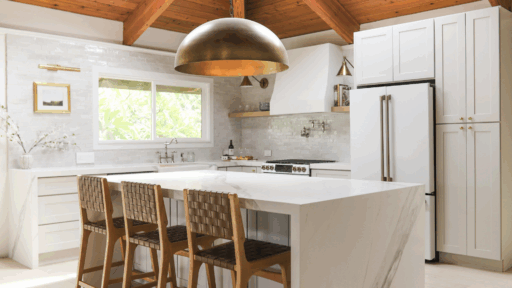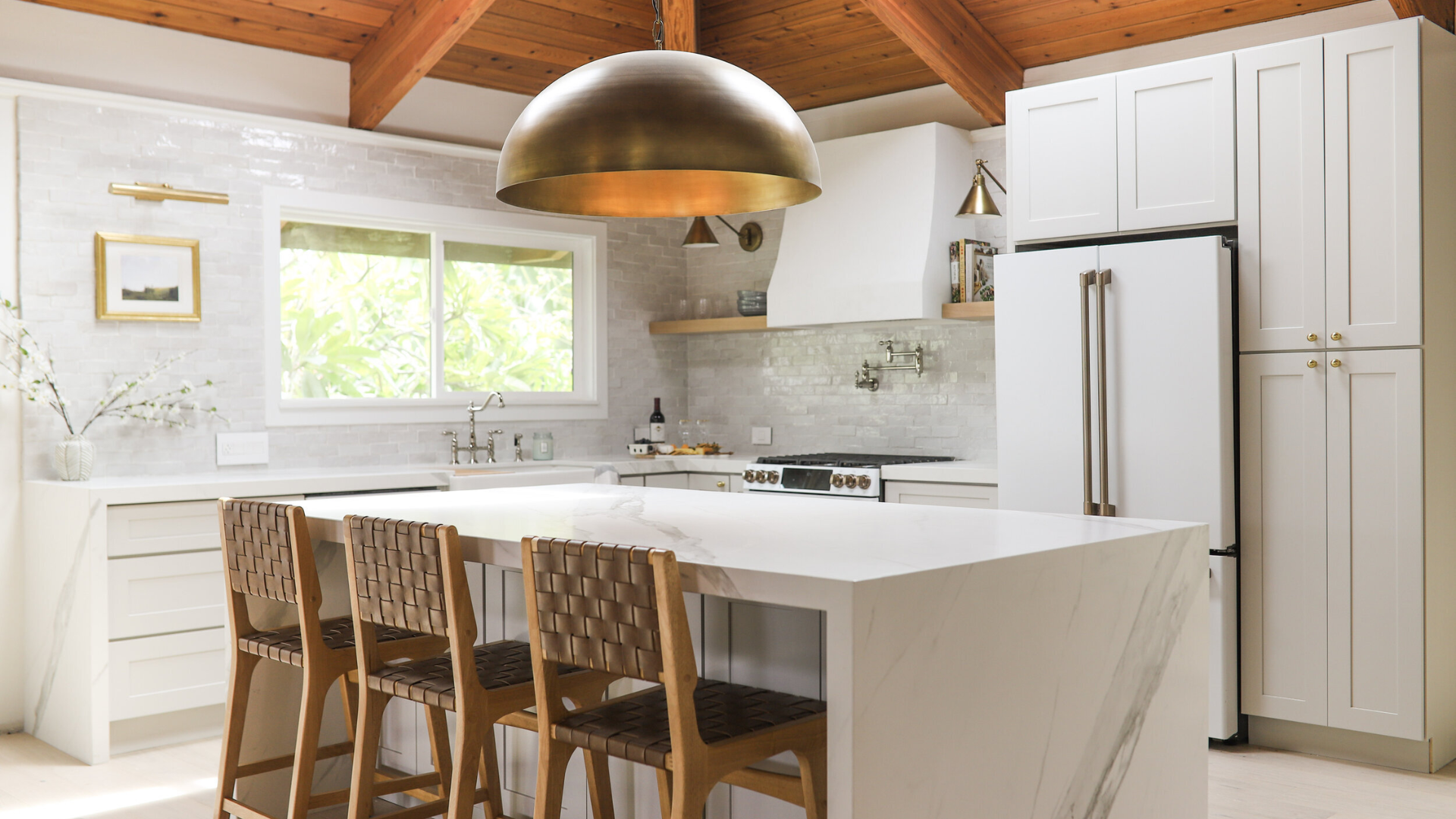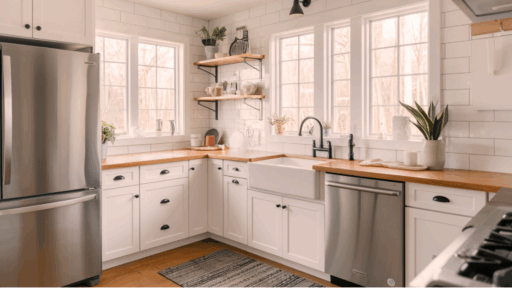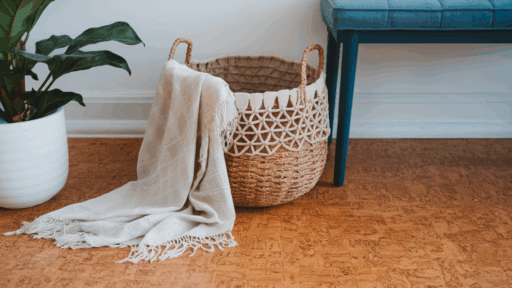When I’m painting cabinets, trim, or furniture, I want a finish that holds up well and looks refined over time. That’s why I decided to try Sherwin-Williams Emerald Urethane Trim Enamel.
It’s described as a high-performing, water-based enamel that offers the durability and appearance of oil-based paint, without the strong odor or laborious cleanup.
In this post, I’ll share what I’ve learned through research, personal use, and insights from professionals.
I’ll explain how this product stands out, how it compares to other paints I’ve used, and what’s helpful to know before making a choice.
If you’re planning to update cabinets or interior trim, I hope this breakdown helps you assess whether this paint meets your needs.
What Is Sherwin-Williams Emerald Urethane?
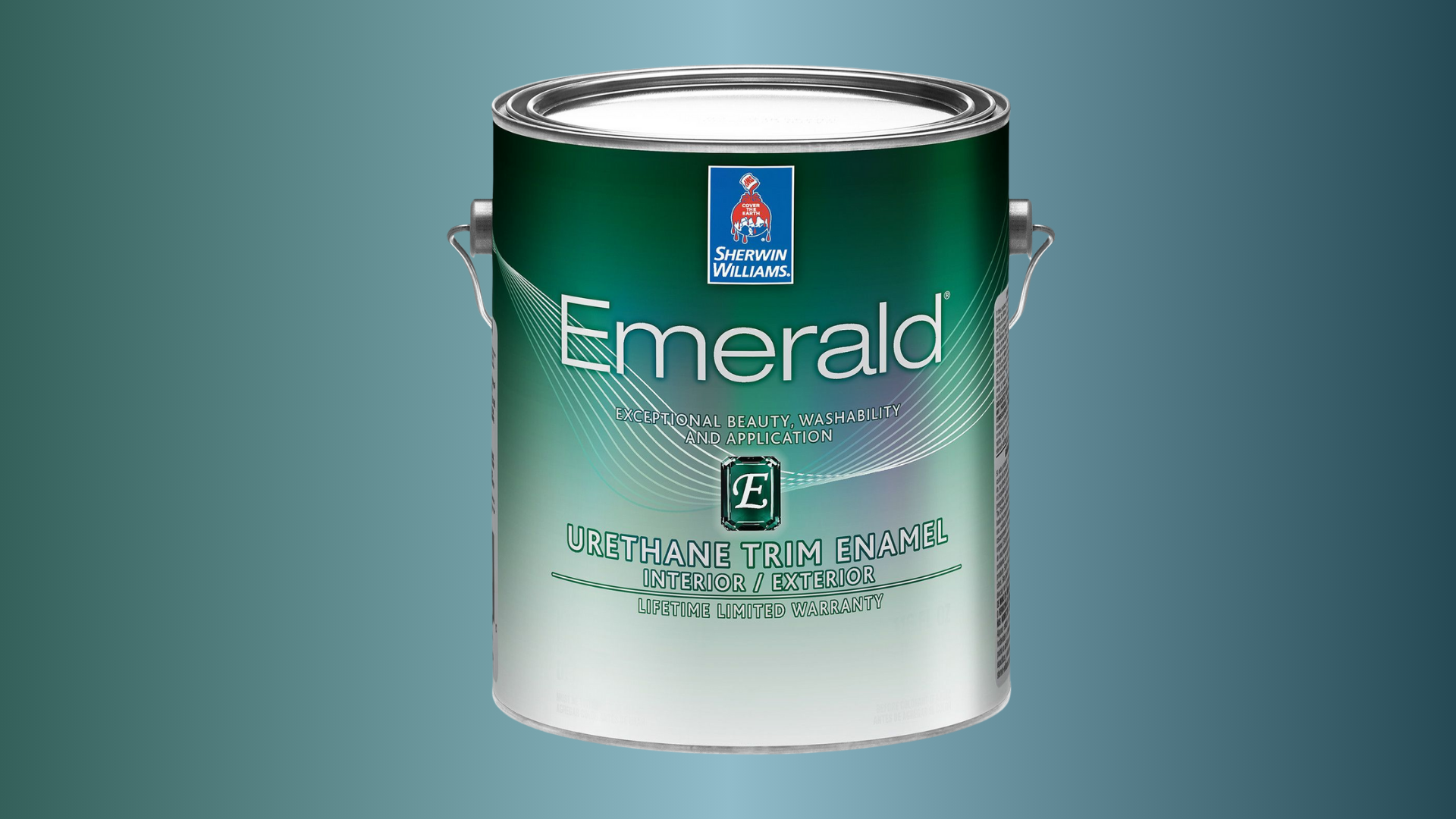
Sherwin-Williams Emerald Urethane Trim Enamel is a water-based enamel specifically designed for use on cabinets, trim, and doors.
I’ve found that it performs differently from typical wall paint. It dries to a more rigid surface, smooths out as it cures, and provides a more refined result, making it suitable for high-traffic or detail areas.
Though it’s water-based and easy to clean up during application, once dry, it behaves more like traditional oil-based enamel in terms of durability.
Key Characteristics:
- Waterborne alkyd-urethane formulation
- Offered in satin, semi-gloss, and gloss finishes
- Low VOC with minimal odor
- Designed to resist yellowing over time
- Part of Sherwin-Williams’ premium Emerald product line
Key Features and Benefits of Emerald Urethane
This isn’t a general-purpose paint. It includes qualities that many professionals and experienced DIYers look for in a durable, high-performance finish.
- Strong Durability: Emerald Urethane forms a tough outer shell after curing. It’s highly resistant to scratches, scuffs, cleaning chemicals, and water and moisture.
- Excellent Flow and Leveling: The paint spreads smoothly and settles into a uniform coat. Brush and roller marks disappear as it dries, creating a factory-like finish when applied correctly.
- Non-Yellowing Formula: Unlike some oil-based paints, Emerald Urethane retains its white color over time. This is a big plus for trim and cabinetry in white or light colors.
- Good Adhesion: With proper surface preparation and priming, this paint adheres well to bare wood, previously painted surfaces, MDF, and laminate (when used with bonding primer).
- Variety of Finishes: You can choose from satin (soft, subtle shine), semi-gloss (classic, easy to clean), and gloss (high sheen, reflective). These options let you match the finish to your style and cleaning needs.
Application Review: Sherwin-Williams Emerald Urethane Trim Enamel
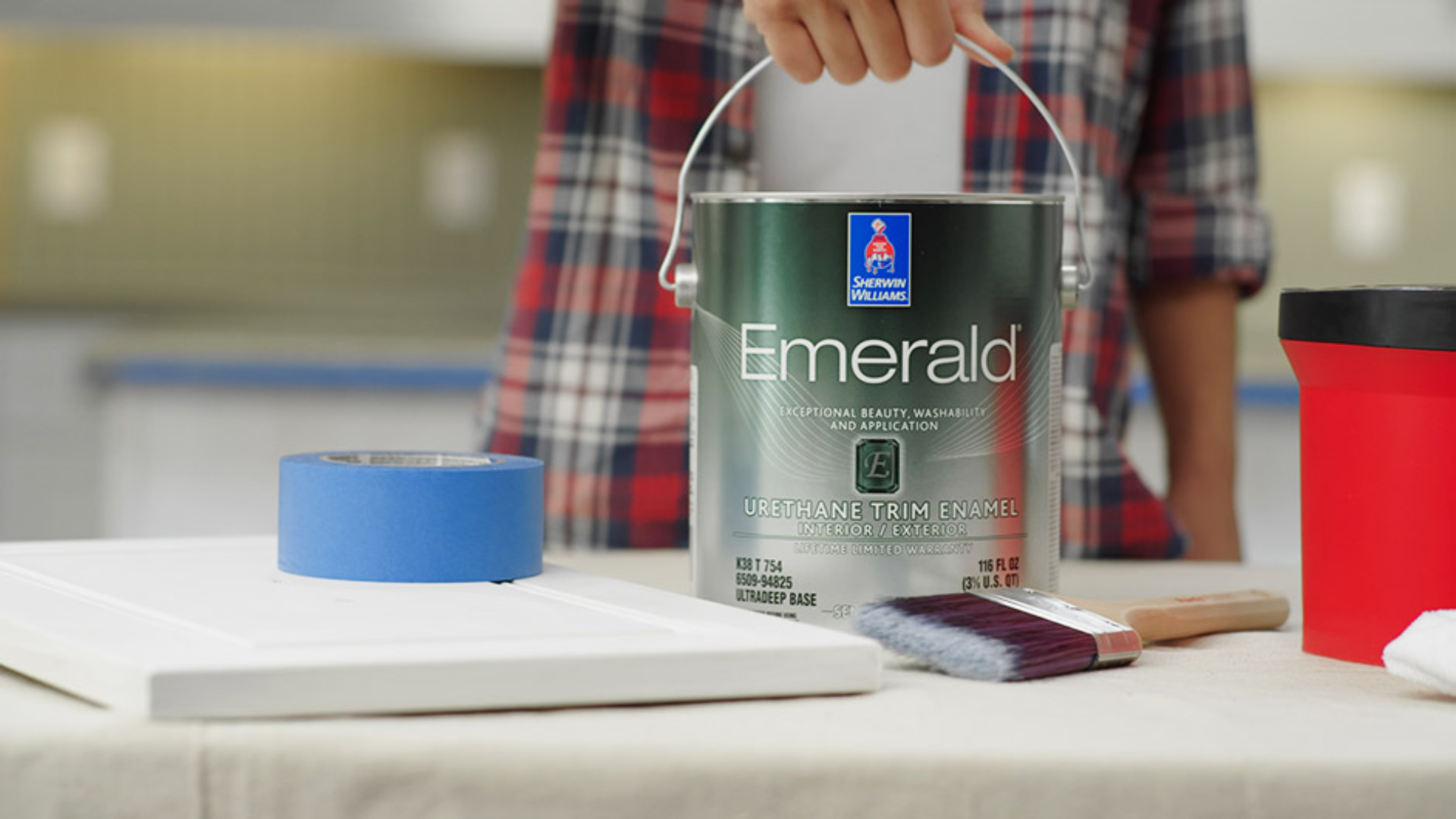
Sherwin-Williams Emerald Urethane Trim Enamel delivers a refined, durable finish when applied with care and proper preparation. It performs best when key application steps are followed precisely.
- Surface Preparation: Clean surfaces with a degreaser, such as trisodium phosphate (TSP). Lightly sand glossy areas for better adhesion. For slick materials like laminate or melamine, use a bonding primer to prevent peeling.
- Application Method: Use a high-quality brush or sprayer. Work quickly and avoid over-brushing, as the paint sets fast and can show drag if overworked.
- Dry Time and Curing: Dries to the touch in 4–6 hours. Recoat after 16–24 hours. Full cure takes 7–30 days, depending on humidity and temperature.
Pros and Cons of Emerald Urethane
I’ve used Sherwin-Williams Emerald Urethane Trim Enamel on several projects, and it has its highs and lows. If you’re thinking about trying it, here’s a quick look at what I’ve found works and what doesn’t.
| Pros | Cons |
|---|---|
| Smooth, oil-like finish | More expensive than regular trim paints |
| Extremely durable for daily wear | Long dry and cure times |
| Low odor and low VOC | A thicker formula can be tough for beginners |
| Easy water cleanup | Needs sanding and priming for best results |
| Doesn’t yellow over time | Brush marks may appear if applied too heavily |
| Great for kitchens and bathrooms |
I like the look and toughness of this enamel, especially for trim and cabinets. But if you’re short on time or just starting out, it’s worth weighing the learning curve and price tag first.
Cabinet Paint Review: Sherwin-Williams Emerald Urethane
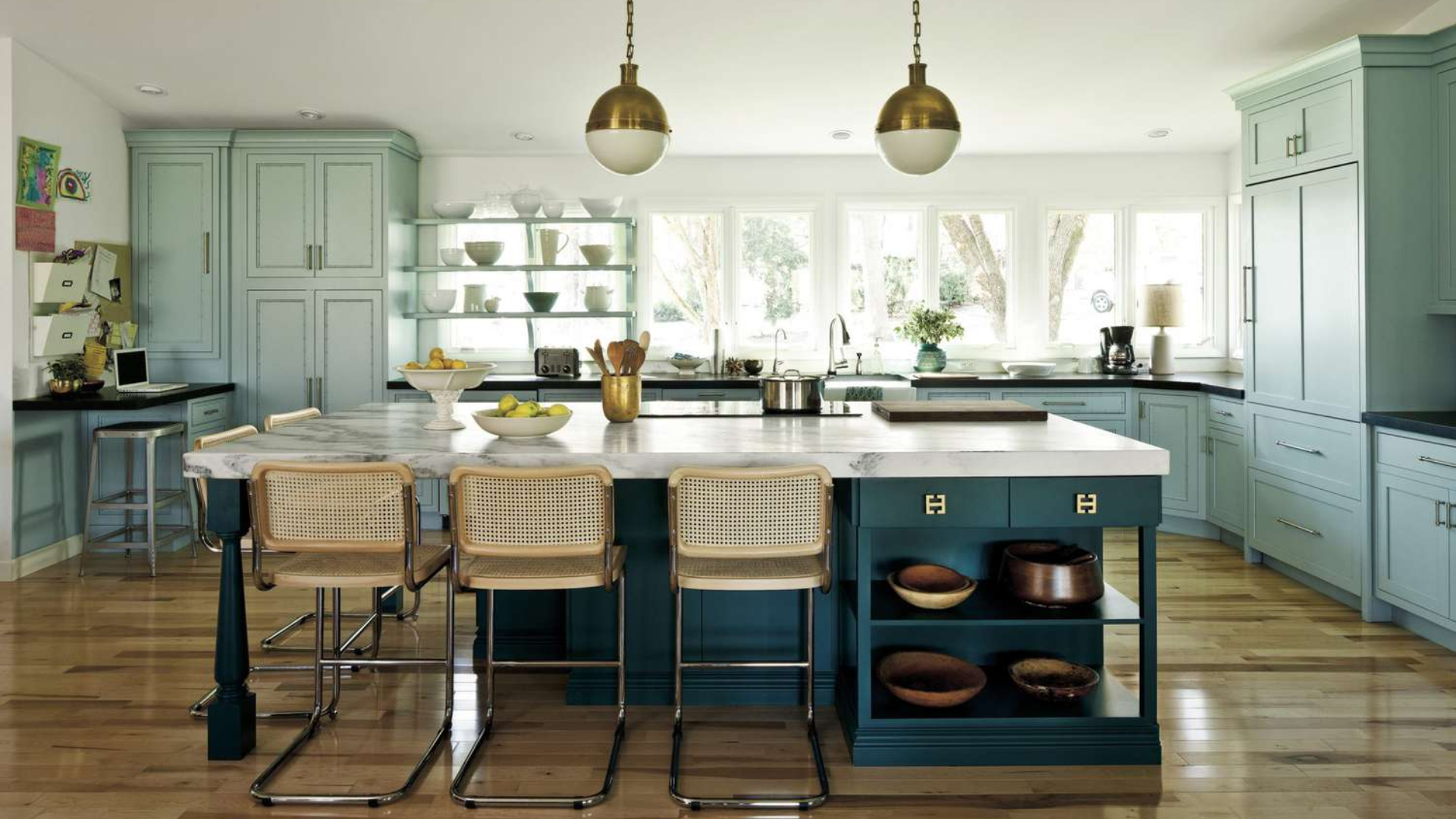
Kitchen cabinets are exposed to daily wear, heat, moisture, grease, and constant handling. For this reason, the choice of paint plays a major role in both the appearance and longevity of a finish.
Professionals frequently recommend Sherwin-Williams Emerald Urethane Trim Enamel for cabinet painting, and its performance backs up that recommendation.
Why It Works for Cabinets
This paint cures to a hard, durable surface that withstands repeated use well. It resists chipping, even on high-contact areas like cabinet doors that are opened and closed multiple times a day.
It also exhibits excellent leveling properties; when appropriately applied, brush marks fade as the paint settles, resulting in a finish that closely resembles a sprayed application.
Resistance to Stains and Moisture
Emerald Urethane is designed to resist food stains, cooking oils, and common kitchen cleaners. After it has fully cured, the surface can be cleaned with a damp cloth or a mild cleaning solution.
This makes it especially suitable for high-use areas, such as drawer fronts and door panels, where resilience and easy maintenance are crucial.
Emerald Urethane vs. Other Paints
While each product has its strengths, Emerald Urethane stands out in specific areas such as durability, curing time, and resistance to yellowing.
Understanding how it compares to options like Emerald Interior Latex, Benjamin Moore Advance, and ProClassic can help determine the right choice.
Based on surface type, project scale, and performance expectations. There are a few paints often compared to Emerald Urethane. Let’s see how it stacks up:
| Paint | Finish Type / Base | How It Compares to Emerald Urethane | Best Use |
|---|---|---|---|
| Emerald Interior Latex | Acrylic latex (water-based) | Less durable; better for walls and ceilings | General wall surfaces in living areas or bedrooms |
| Benjamin Moore Advance | Waterborne alkyd | Levels better, longer cure, softer finish | High-detail trim and cabinetry where leveling is a priority |
| ProClassic | Water-based acrylic/alkyd blend | More affordable, less durable, may yellow over time | Budget-friendly trim and doors in low-traffic areas |
Emerald Urethane: Customer Reviews
What are people saying after using this paint in their homes or on job sites? Reviews are mixed, but overall they lean positive, mainly from users who followed the correct prep and application methods.
Positive Feedback
Most users highlight the beautiful finish and long-term durability. Many appreciate that it has a low odor and is easy to clean with soap and water. Here’s what they liked:
- “It looks like a professional sprayed it—even though I used a brush.”
- “No brush marks. Dried smooth and even.”
- “Held up beautifully even after two years on my bathroom vanity.”
Common Complaints
Some users encountered problems, typically due to incorrect usage or unrealistic expectations. The most common complaints include:
- Long dry times (especially in humid areas)
- Price (can be $90+ per gallon)
- Thick texture (can drag during brushing)
One homeowner noted: “You can’t rush it. It feels dry after a few hours, but it’s still soft underneath. Wait at least 24 hours before a second coat.”
Cost and Value Review: Sherwin-Williams Emerald Urethane
Sherwin-Williams Emerald Urethane Trim Enamel is positioned as a premium product. Typically ranging between $90 and $115 per gallon, the cost reflects its high-end formulation.
It’s available in quart and gallon sizes, with finish options including satin, semi-gloss, and gloss to suit various application needs.
While the upfront price is higher than that of many standard trim paints, the value lies in its performance.
For projects like kitchen cabinets, bathroom vanities, or built-in units, Emerald Urethane offers excellent durability.
However, it may not be necessary for minor wall touch-ups or trim in low-use areas, where a less expensive option can still meet basic needs.
For professionals, the quality often justifies the cost, especially in high-visibility or high-traffic areas. For DIYers, success hinges on proper surface preparation and patience.
Ultimately, Emerald Urethane delivers long-term durability and a refined finish that make it a solid choice where lasting quality is the priority.
Common Mistakes to Avoid
Although Sherwin-Williams Emerald Urethane is a premium product, it won’t perform well if misused. If you want a finish that looks good and lasts, make sure to steer clear of these problems.
- Not waiting between coats: You need at least 16–24 hours before recoating. Rushing can cause tacky or uneven paint.
- Skipping primer: Slick or glossy surfaces need a bonding primer. Without it, the paint may peel.
- Painting in bad conditions: Cold or humid air slows drying and weakens adhesion. Paint in moderate, dry weather.
- Applying thick coats: Heavy layers result in drips, bubbles, and prolonged dry times. Thin coats work best.
Conclusion
Sherwin-Williams Emerald Urethane Trim Enamel is a high-performing option for trim, cabinetry, and doors. It has a smooth finish associated with oil-based products, while also offering water-based cleanup.
When applied with care, it provides long-lasting coverage, making it a strong choice for areas that see frequent use and attention.
That said, it may not be suitable for every project. It’s priced higher than standard paints and requires more time to dry and cure.
Skipping prep or rushing through the application can lead to subpar results. For those willing to invest the time and follow the proper steps, it offers a durable and refined finish that holds up well.
Consider testing it on a small section first, follow the recommended process, and approach the project with patience. With the right application, the outcome is consistently dependable.

